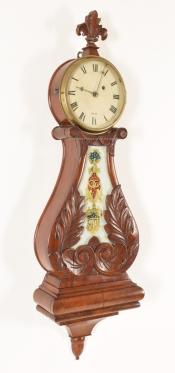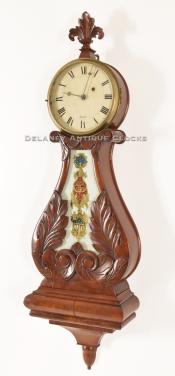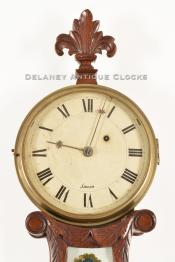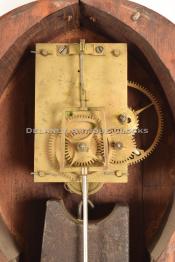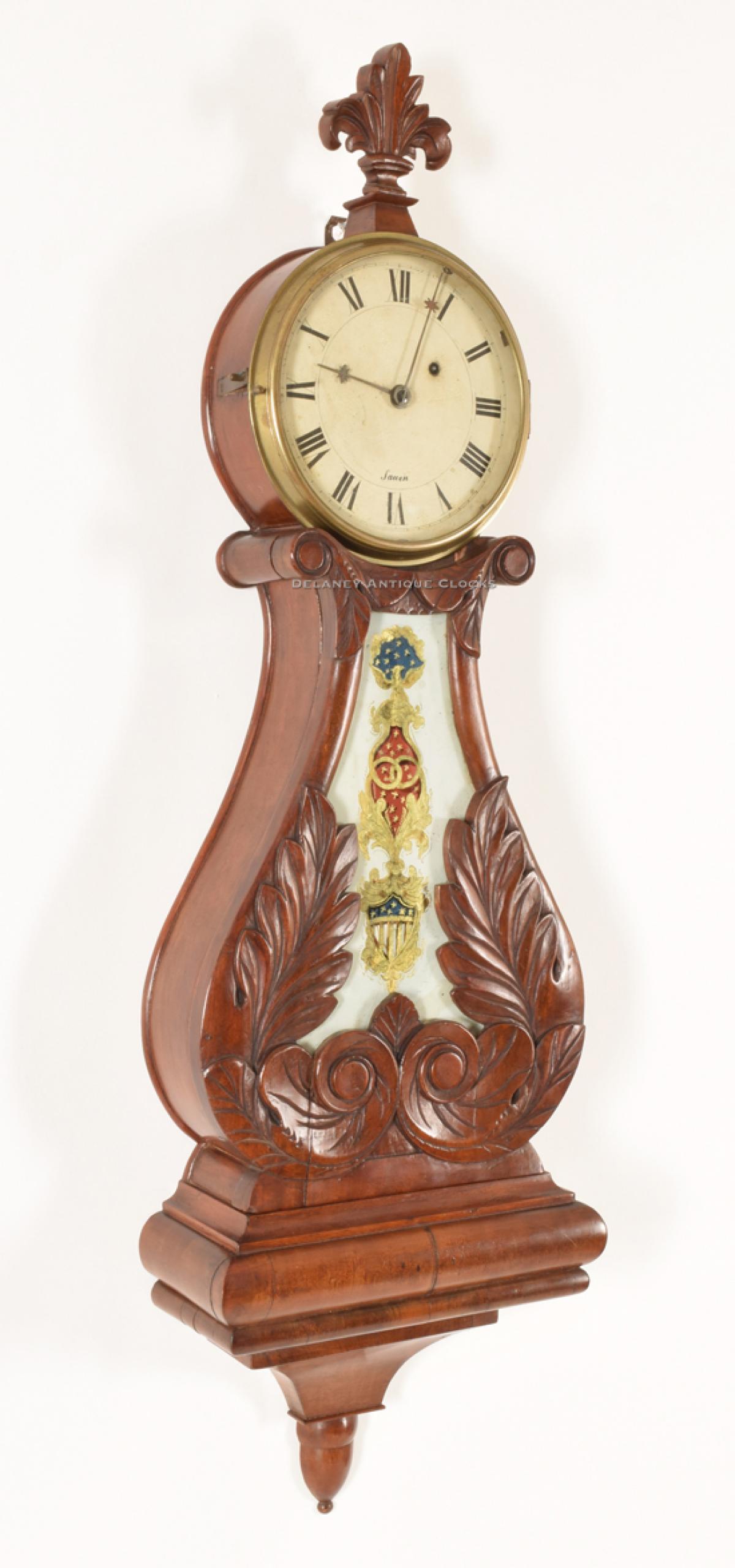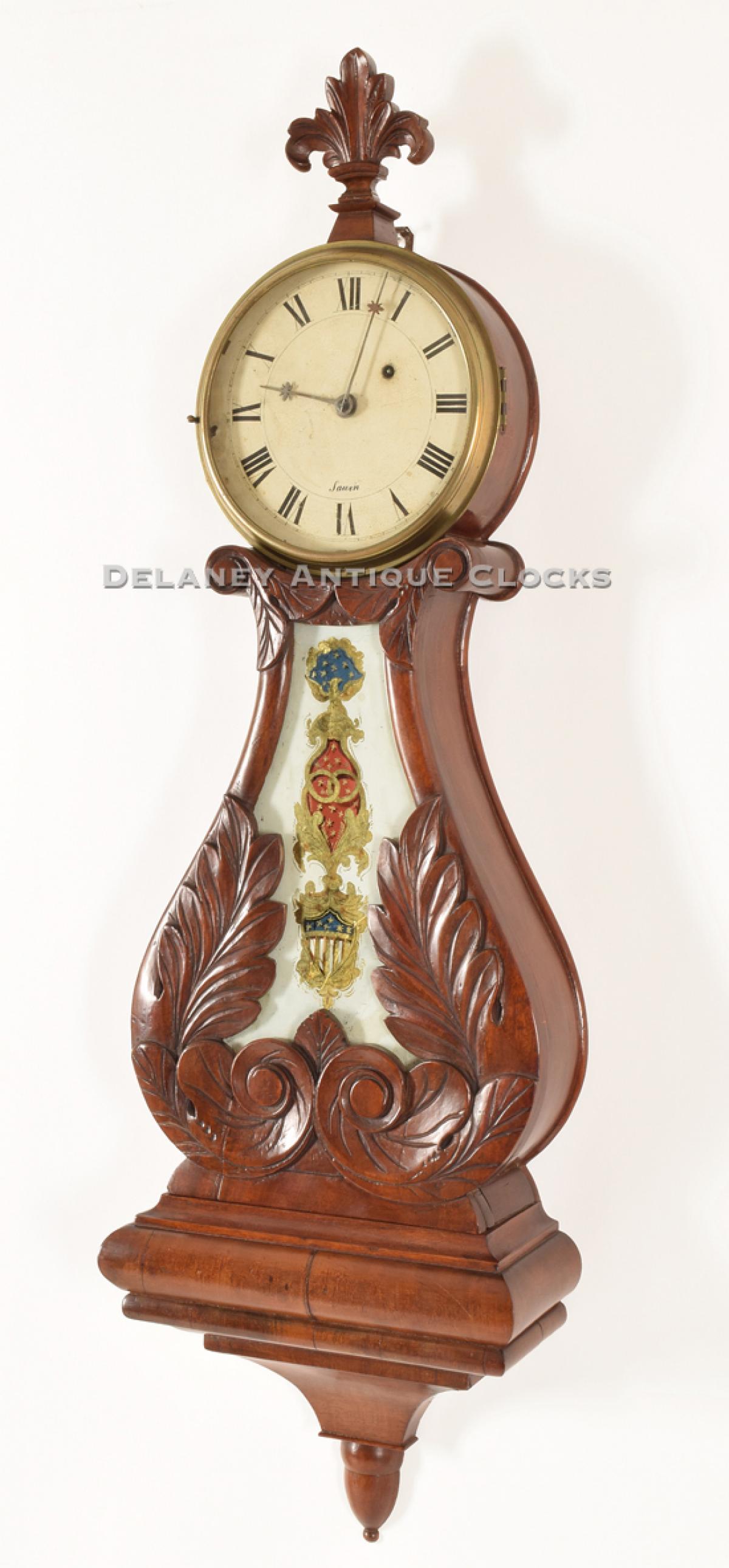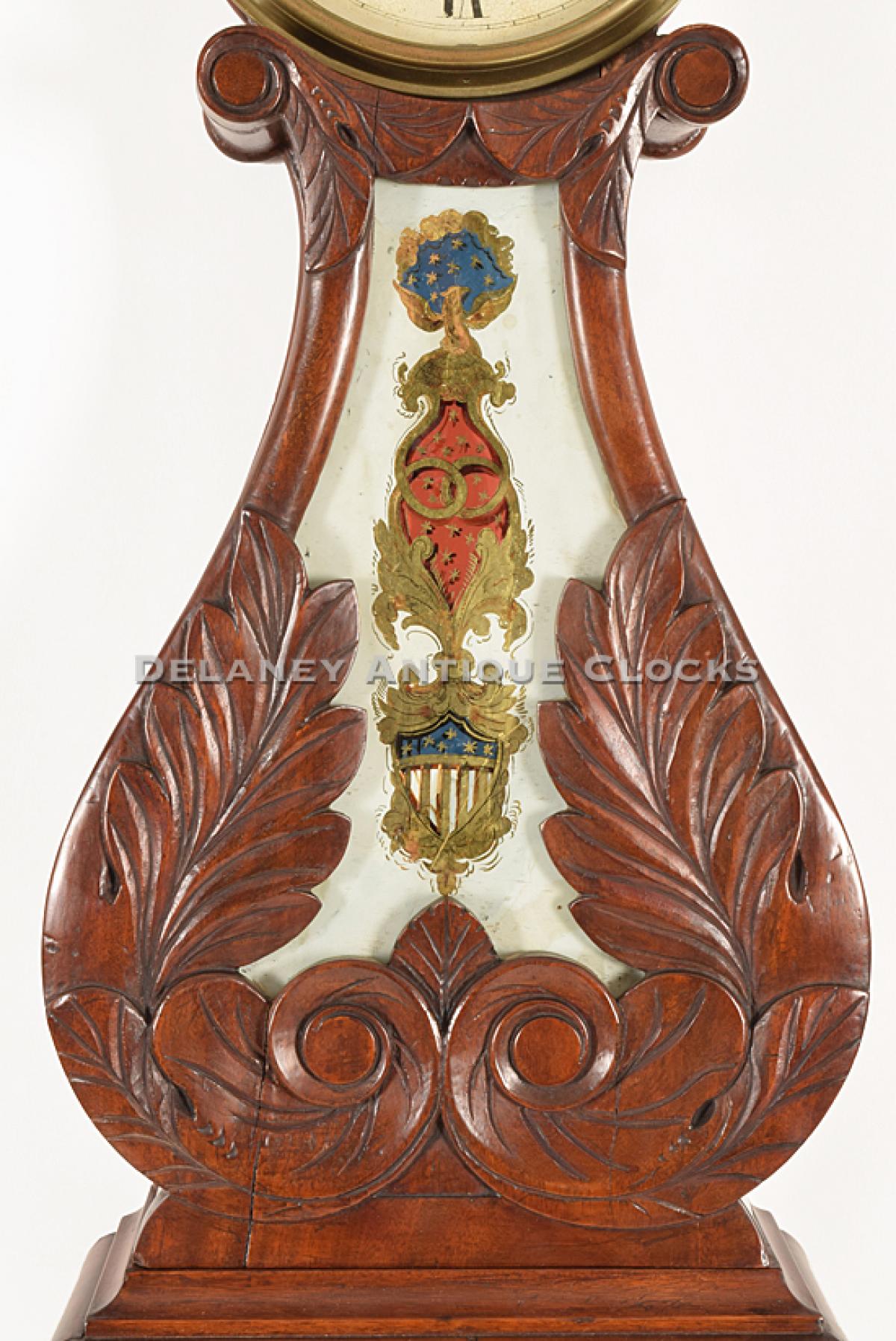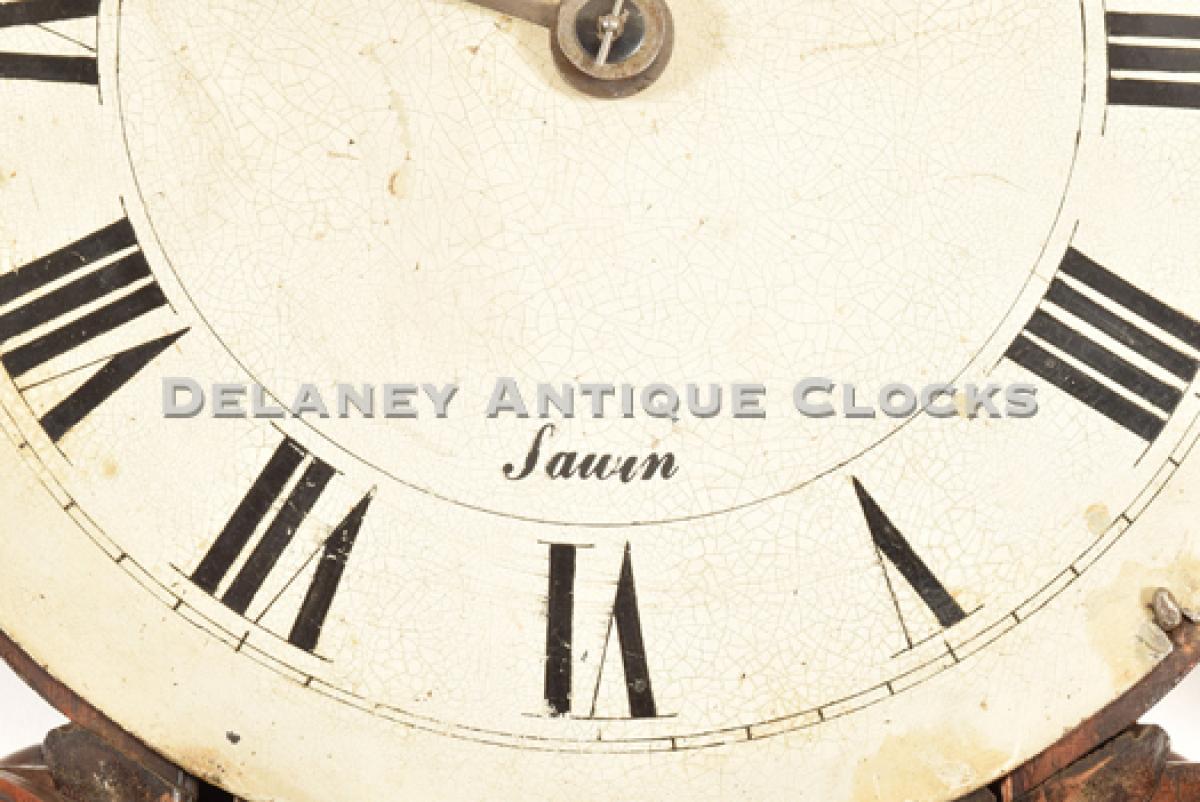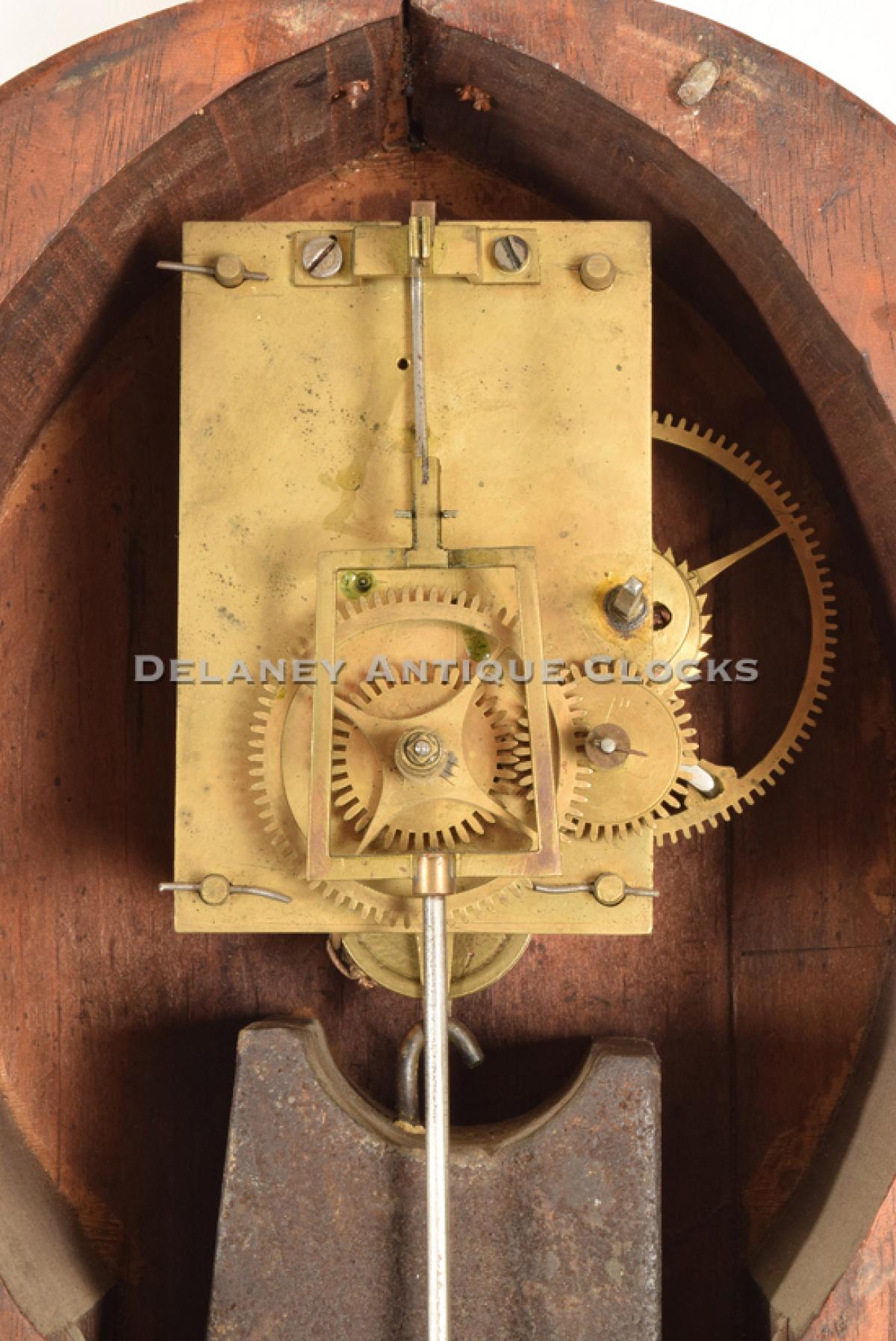John Sawin Boston, Massachusetts. A True Lyre Wall Timepiece. Elegant Harp Pattern. 217117.
Most American Horologists agree that the firm of Sawin & Dyer introduced the lyre clock form sometime around 1825. The form has two versions: the True Lyre and the Box Lyre. Both cases incorporated a finely carved mahogany frame in the form of a musical harp centered in the case form. They differ because the Box Lrye version is designed with a lower door that opens to access the pendulum. The box also visually supports the lyre-shaped decoration.
This example measures approximately 39 inches long from the bottom of the lower bracket finial to the top of the center finial, 11.25 inches wide across the middle section, and 5 inches deep. The painted iron dial measures approximately 7.75 inches in diameter.
This is a fine example. The case is constructed in mahogany, and the patina is excellent. The clock is surmounted by a carved wooden finial fitted onto a capped wooden plinth. The dial bezel is cast in brass. The glass protects the dial and hands. The bezel is hinged, allowing one access to the painted iron dial.
This dial is signed by the Clockmaker “Sawin” just above the hour numeral VI. The time ring is formatted with Roman-style hour numerals. The arrow-pointed hands are steel and are well-made. These are excellent examples.
The carved center frame is easily removable for access to the weight and pendulum. This frame is nicely carved and supports an egloimise tablet. It is painted from the back in excellent colors and features traditional timepiece themes, including the American shield, an American eagle, and designs. Below the frame is a bracket that steps back to the wall. An acorn-style finial hangs from the bottom of the bracket.
The brass movement is secured to the backboard with screws. It is weight-powered and designed to run for eight days on a full wind. The brass plates are supported by four posts. Hardened steel shafts support the brass gearing. Overall, this movement is of good quality.
Please read Paul Foley’s book, Willard’s Patent Timepieces, for a more detailed discussion regarding wall timepieces.
This clock was made circa 1827.
Inventory number 217177.
John Sawin was born in Roxbury, Massachusetts, on September 13, 1799. His parents were John Pierce Sawin and Abigail Partridge (1781-Unknown.) It is thought that he was trained as a clockmaker by his uncle, Aaron Willard. John was also related to Lemuel Curtis, who was a cousin. Throughout his career, John had several working relationships. It appears that he worked with Simon Willard in 1819-1820. He is soon listed as a journeyman working with Aaron Willard Jr. In 1822, John partnered with George Wild Dyar as Sawin & Dyar. This shop was located at 33 Market Street. This partnership lasted until 1827. John continued to make clocks independently and employed many apprentices and journeymen. The Massachusetts Charitable Mechanic Association held its first fair in 1837. John Sawin entered two gallery clocks in the competition. They were equipped with improved regulators to avoid the necessity of removing the dial. They were proclaimed to be the best clocks exhibited at the fair, and he was awarded a Diploma by this new organization. John Died on March 28, 1863, at the age of 62. He is buried in the Christ Church Cemetery on Salem Street in Boston, MA.
The number of signed Swain clocks that survive in today’s marketplace suggests that he was very successful. He advertised that he made Tower clocks and wall regulators. Wall timepieces, gallery clocks, and Massachusetts Shelf clocks have been found. John Sawin is probably best known for creating the lyre form wall timepiece.

